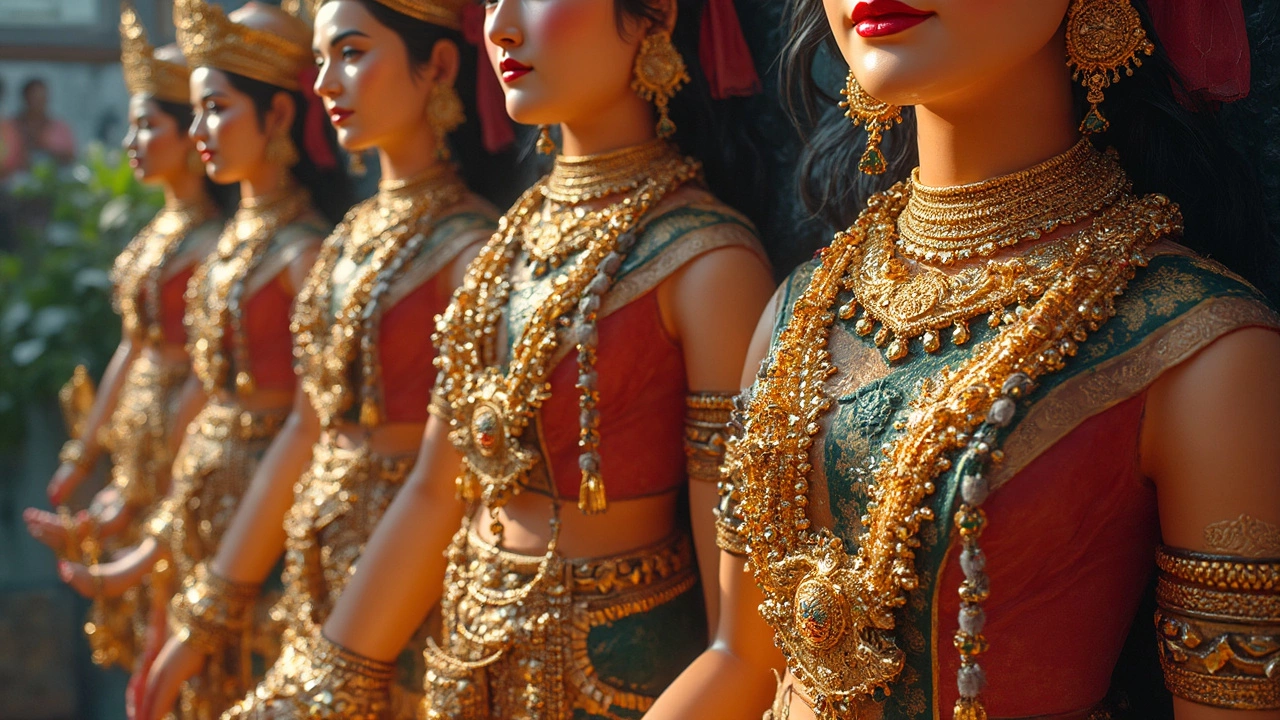Jewelry Traditions India: Culture, Rituals & Modern Twists
When talking about Jewelry traditions India, the practices that surround ornaments across the subcontinent. Also known as Indian jewellery customs, this heritage shapes daily life, celebrations, and identity. One of the most recognizable symbols is the Mangalsutra, a sacred necklace exchanged during Hindu weddings, which reflects marital commitment. Another everyday emblem is the Bindi, the red dot worn on the forehead symbolizing spiritual focus. Both items illustrate how jewelry can carry deep meaning while also serving as fashion statements.
Regional Flavors and Everyday Pieces
India’s vast geography produces a mosaic of styles. In Punjab, the Kada, a thick steel bracelet linked to Sikh identity is a daily accessory, while in the south, elaborate gold bangles mark rites of passage. These regional quirks combine with universal customs, creating a layered tradition where each piece tells a story. The practice of gifting a mangalsutra (the giver, the tie, and the symbolism) varies by community, showing how social roles shape the jewelry’s journey.
Beyond necklaces and bracelets, nose adornments have a long-standing place. The Nose pin, a small stud often worn by women during weddings and festivals signals marital status in many cultures, yet its popularity now spans casual street style. Similarly, bangles aren’t just decorative; gifting bangles carries prayers for prosperity and health, linking personal milestones to collective wishes.
Gold remains the backbone of Indian jewelry traditions. The hallmark “750” on a piece confirms 18‑carat gold, meaning 75% pure gold, a standard that balances durability with richness. Understanding gold purity helps shoppers decide whether a piece fits daily wear or special occasions, an insight crucial when choosing a mangalsutra that must endure a lifetime.
Modern India sees these customs evolve. Young couples may opt for a minimalist mangalsutra in rose gold, while divorced women navigate whether to keep or replace their necklace, reflecting shifting social norms. Designers blend traditional motifs with contemporary cuts, proving that heritage can stay fresh without losing its soul.
Below you’ll find a curated collection of articles that dive deeper into each of these facets—whether you’re curious about who gives the mangalsutra, how gold pricing compares across borders, or the symbolism behind a simple bindi. The guides offer practical tips, cultural context, and up‑to‑date trends, giving you everything you need to appreciate and shop Indian jewelry with confidence.
